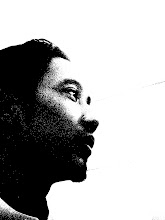
In line with the overall guidelines of the early Bauhaus, the metal workshop in Weimar, which at first ran under the name of gold, silver, and copper forge, taught traditional metal working techniques.
Johannes Itten was the artistic director during the first years, and then in 1922, the experienced silversmith Christian Dell took on the position of master craftsman until 1925. The student's production clearly stood under the influence of Itten's teachings: the main concern in the production of vessels and appliances was the free study of form together with the experimentally acquired knowledge of metallic materials and their possible treatment. When, in 1923, László Moholy-Nagy became head of the workshop, the focus was directed towards more functional aspects. Straightforward vessels reduced to elementary forms in brass, nickel-plated brass or silver were produced. These were indeed conceived for industrial serial production, but realized only as single pieces or in handcrafted series.
This was the period in which the first lamp models were produced, namely the "Bauhaus lamp" by Carl Jakob Jucker and Wilhelm Wagenfeld. In Dessau, the more professional and extensive workshop's equipment was capable of accomodating a more rational serial production of vessels and appliances. Already in 1926, the metal workshop mastered the design and production of all the lighting requirements for the new Bauhaus building. In the following years, it became more and more a "design laboratory" for new lighting equipment and, finally, when several industrial lighting manufacturers took the models into serial production, it achieved the status of one of the most effective and successful workshops at the Bauhaus.
The production of some of the types, such as the Kandem lamps by Marianne Brandt and Hin Bredendieck, was continued for many years after the closure of the Bauhaus.
Source From :-www.bauhaus.de/english/bauhaus1919/werkstaetten

No comments:
Post a Comment